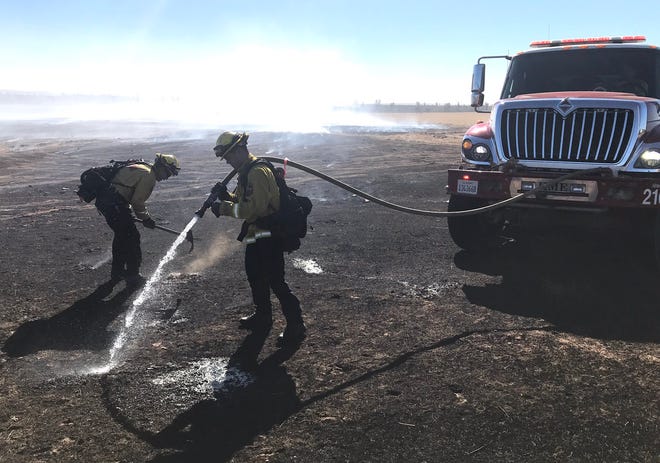[ad_1]
It’s not supposed to be wildfire season in California. Yet, a month into 2021, the Golden State has more than doubled the number of wildfires from 2020 – a record-setting year with more than 9,600 blazes that blackened more than 4 million acres.
And the number of acres burned on nonfederal land last month was more than 20 times the state’s five-year average for January.
While the rain and snow of the past week may make last year’s fire season seem like a distant memory, those numbers are a reminder that wildfires have become a year-round concern in the nation’s most populous state.
In January, there were 297 fires that burned 1,171 acres statewide on nonfederal lands, according to the California Department of Forestry and Fire Protection.
During the same period last year, there were 97 wildfires that burned 22 acres. The five-year average for January is 108 fires, with 58 acres burned, according to Cal Fire.

While January finished with rain and snow storms, wind and dry conditions settled over some parts of the state earlier in the month, said Christine McMorrow, a Cal Fire spokeswoman.
“So why more fires than last year? It’s really hard to say exactly,†McMorrow said. “But we did have quite a few fires pop a couple of weeks ago, and I think it’s just a good reminder that the majority, 95%, of fires are human caused. And when we have conditions that are just right, such as wind and low humidity it’s easy for those fires to get big enough that the fire department needs to be called.â€

The biggest fire of the year, so far, was 685 acres on the Wind Wolves Preserve in southwest Kern County.
McMorrow said many fires are put out before they become large enough to garner headlines in the news.
When including fires on U.S. Forest Service lands, the count for January jumps to 345 , according to Cal Fire.Â
While it’s too early to predict this year’s wildfire season, McMorrow said, precipitation totals continue to lag, putting most of the state in an ongoing drought. As of Jan. 26, most of the state was in severe to extreme drought, according to the U.S. Drought Monitor.
Drought conditions, however, reflect more than just rainfall, according to the National Oceanic and Atmospheric Administration. When the agency sets drought levels, it also measures how much water is in streams, lakes, and soils compared to the usual for the same time of year.
The “atmospheric river” that blasted the Sierra Nevada Mountains with more than seven feet of snow last week only brought snowpack to about half of its average for this time of year and less than a third of its yearly average, according to the California Nevada River Forecast Center.Â
California’s largest reservoirs remained at relatively low levels, too.
Shasta Dam is just under halfway full, or about two-thirds of average for this time of year. Millerton Lake, another critical reservoir for the southern and central Sierra, is about one-third full.
“We always welcome a good storm like this, but one week doesn’t make a winter, and one week doesn’t change a dry situation,†David Rizzardo, chief of the hydrology branch at the state’s Department of Water Resources, told the Sacramento Bee.
Follow Damon Arthur on Twitter: @damonarthur_RS.Â
Contributing:Â Joshua Yeager, Visalia Times-Delta
[ad_2]
Source link





